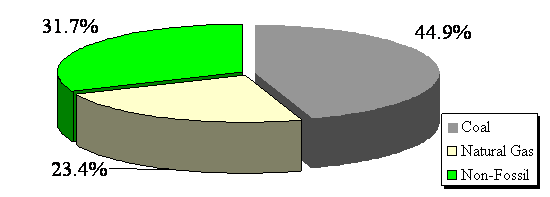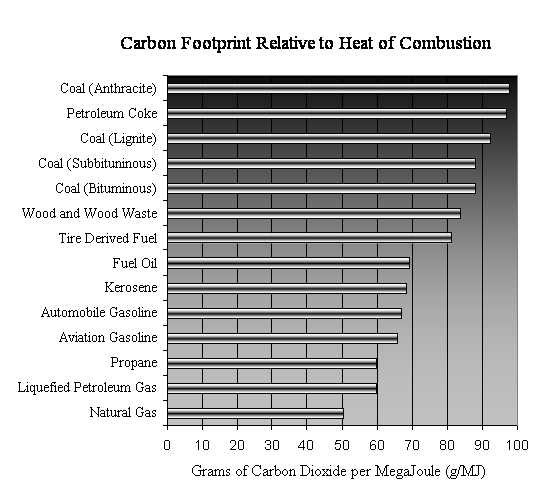|
Copyright ©2011 by Paul Niquette. All rights reserved.. |
|
Copyright ©2011 by Paul Niquette. All rights reserved.. |

...for a total of 53.5 g/MJ, which compares favorably to gasoline-derived heat @ 65.0 g/MJ. 
...however, that comparison also
implies that one MJ of heat derived from
burning coal at a power-plant is equivalent to one MJ
of heat derived from burning gasoline inside a car's
engine. Sophisticated solvers recognize that
many technical factors have been left out of the
analysis, as depicted in the schematic model below...
A complete solution calls for making
key assumptions
beyond the scope of the puzzle. For the plug-in
electric car, those MJs of heat at
the site of combustion in the power plant must be
grossed up to overcome a myriad of losses in
electrical energy on the pathway to becoming MJs
of work
at the wheels of the electric car. Producing all
that extra heat from burning fossil fuels must then be
attributed to the electric car, thereby increasing the
effective size of its carbon
footprint.
...for a total of
Technical Observations: Internal Combustion Engine Inside the Gasoline Powered Car The carbon footprint of any vehicle must cover the requirements of tractive effort. The 'pathway' from heat-to-work may be exceptionally short for the conventional car but not without losses. The prime mover in your car is an internal combustion engine (Otto Cycle). Like all heat engines, its efficiency is framed by the laws of thermodynamics and thus requires more MJs of heat to be produced inside its combustion chambers than the resulting MJs of work ultimately delivered at the wheels.Prime Movers Outside the Electric Car The gas-turbine is the prime mover in some electric power plants. It is also an internal combustion engine (Brayton Cycle), which captures MJs of heat from burning fuel within its combustion chamber. The working fluid is air, and the design maximizes its efficiency in continuously converting heat-to-work -- though not delivered directly to the wheels of a car.Electrical Generators Outside the Electric CarNatural gas has the smallest carbon footprint for the fossil fuels under consideration here. Methane is 25.0% hydrogen by weight compared to octane which is only 15.8% hydrogen. Hydrogen is mighty energetic stuff, producing 4.3 times carbon's energy per pound, while emitting only H2O into the atmosphere.The coal-fired steam turbine is the predominant prime mover in electric power worldwide (80% by some estimates). In its solid state, coal is not suitable for burning inside an engine. Thus, an external combustion engine (Rankine Cycle) requires MJs of heat produced outside a 'boiler' to be conducted by a temperature difference to superheat the working fluid (water vapor) inside. That impacts thermal efficiency and enlarges the carbon footprint for coal.Coal may be the most abundant hydrocarbon in the U.S., but according to the chart, the carbon footprint for coal is 40% larger than that for gasoline -- or diesel (fuel oil) for that matter. To match the heat energy produced by the fire inside your car's engine, the coal-fired generating plant, which may be far way and out of mind, must emit typically 40% more CO2. Whether spun by gas-turbine or by steam turbine, conversion to electrical power is accomplished by generators. Not limited per se by thermodynamics but, depending on a number of variables including load factor, electrical generators can be quite efficient. Still, some MJs must be given up in the rotating machinery (friction, windage), which needs to be taken into account in the calculations. Meanwhile, carbon footprints for non-fossil power plants (hydroelectric, nuclear fission, solar-thermal, wind-turbines) are not affected by losses.Electrical Distribution Outside the Electric Car The schematic above shows electric power being stepped up in transformers at the power station for efficient delivery via the transmission grid. MJs are lost in the transformer (core losses) and in the transmission line (copper losses, corona discharge), and more losses during the step-down through substations and distribution transformers into neighborhood wiring.Charging and Discharging the Battery Onboard the Electric Car Obviously, the electric car cannot directly use power from stationary facilities but must operate instead from stored charge in onboard batteries for supplying power to the traction motors. Those conversion losses inside the car must also be charged (no pun intended) to the sources of heat at the power plant in calculating carbon footprint for the electric car. Incidental Comments:
|
![]()
|
|
|
|
|